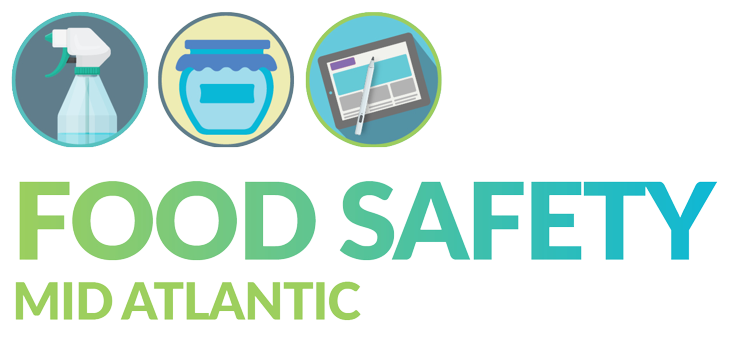
What’s the first thing you do when you get to work? Maybe you take your coat off, put it in a specific closet, and put on your work shoes and apron. Or maybe you start the day by running the hot water for two minutes to get it hot enough to wash your hands.
Either way, do you have a Standard Operating Procedure (SOP) that documents exactly how the process should occur?
SOPs are the core of your business and your food safety program. Without them, there will be no consistency, no clarity, and no guarantee of food safety.
What is an SOP?
A standard operating procedure (SOP) is a document that outlines in writing how to do a process or procedure. SOPs cover everything from how to lock the door to how to sterilize a jar for jam to how you record the freezer temperature each day.
SOPs cover all tasks related to production, record keeping, and the like. SOPs that cover sanitation processes get their own set of documents referred to as SSOPs (Sanitation SOPs). SSOPs serve the same purpose and follow the same structure as SOPs.
Each process involved in operating your business and making your product needs its own SOP or SSOP, which means you can end up with hundreds of these documents depending on the complexity of your operation.
Each SOP needs to answer the 5 Ws and 1H: Who, What, Where, When, Why, and How. It should contain the following sections:
- Title – What process or task does this SOP cover?
- Ex. Checking Freezer Temperatures
- Purpose – Why do you do the task?
- Ex. Checking the freezer temperature daily to make sure it is below 10 F keeps all contents properly frozen and food safe.
- Scope – When and where should this task be done?
- Ex. Check the freezer in the back right corner of the kitchen daily at 10am.
- Responsibility – Who is the person who does this task and who should be contacted if things go wrong?
- Ex. The manager on duty should check the freezer and contact the general manager if the temperature is above 10 F.
- Equipment Needed – What equipment is needed to complete this task?
- Ex. Thermometer, temperature log, pen
- Procedure – How do you do the task?
- Ex. 1. Go over to the freezer.
- 2. Look at the temperature displayed in the bottom right corner of the freezer.
- 3. Open the freezer door and use the infrared thermometer to confirm that the displayed temperature is correct.
- 4. Write the temperature and time checked on the log and sign your name.
An SOP that contains all of the above sections will contain all of the information needed to successfully complete and document the task.
Characteristics of a Strong Food Manufacturing SOP
The best SOPs are clear enough that anyone could follow them, specific to your facility, and representative of what your team actually does each day.
SOPs should not assume any knowledge of the tasks at hand. They need to spell out exactly how to do each step of a process so that regardless of who’s doing the task the end results are the same.
If an SOP says to run water until it’s hot but doesn’t specify the exact range of temperatures that are considered hot or that you need to wait two minutes to get it to those temperatures, then some people will run the water for thirty seconds and some for two and a half minutes. Likely, none of them will be in the correct range of water temperature for safe handwashing.
Clear instructions and defined critical limits make it so that an SOP outlines a repeatable process that brings the same, consistent results each time.
Your SOPs also need to be specific to your facility and represent how the task is actually performed. An SOP that says to put finished containers of hummus in a walk-in cooler when you actually have reach-in fridges does not document your process. Likewise, if your SOP says to put a label on a jar then fill it but the employees who do the task have found that filling the jar then labeling it is more efficient, the SOP is not valid and needs to be changed.
A clear and accurate SOP is an effective SOP.
Your Food Manufacturing Business Needs SOPs to Succeed
Like we said above, those clear and accurate SOPs are the core of your food safety program. They document every step needed to keep your food safe. They are also the key to your success.
Your food safety plan should be built around the SOPs that you use every day to make sure the quality and safety of your product is consistent.
When you bring on a new employee, the strong SOPs streamline your training process.
When an employee calls out sick, the strong SOPs allow anyone to take on their responsibilities without a change in output.
When you get a new wholesale client, the strong SOPs show them your process, prove your food is safe, and enable you to close the deal.
When you do a self-audit of your food safety program, the strong SOPs show you your strengths and your areas for improvement.
Your SOPs should cover every process from the moment you walk in the door in the morning until you lock it again at night. Any form or log you or your employees have to fill out, should have an SOP with instructions on how to fill out the form.
The SOPs must be clear, accurate to how the tasks are actually completed, and updated over time as things change.
If you find that you’re missing SOPs, your SOPs are outdated, or your SOPs are unclear, don’t panic. Schedule a free consultation and we can support you in creating a library of strong SOPs that will help your business thrive.
